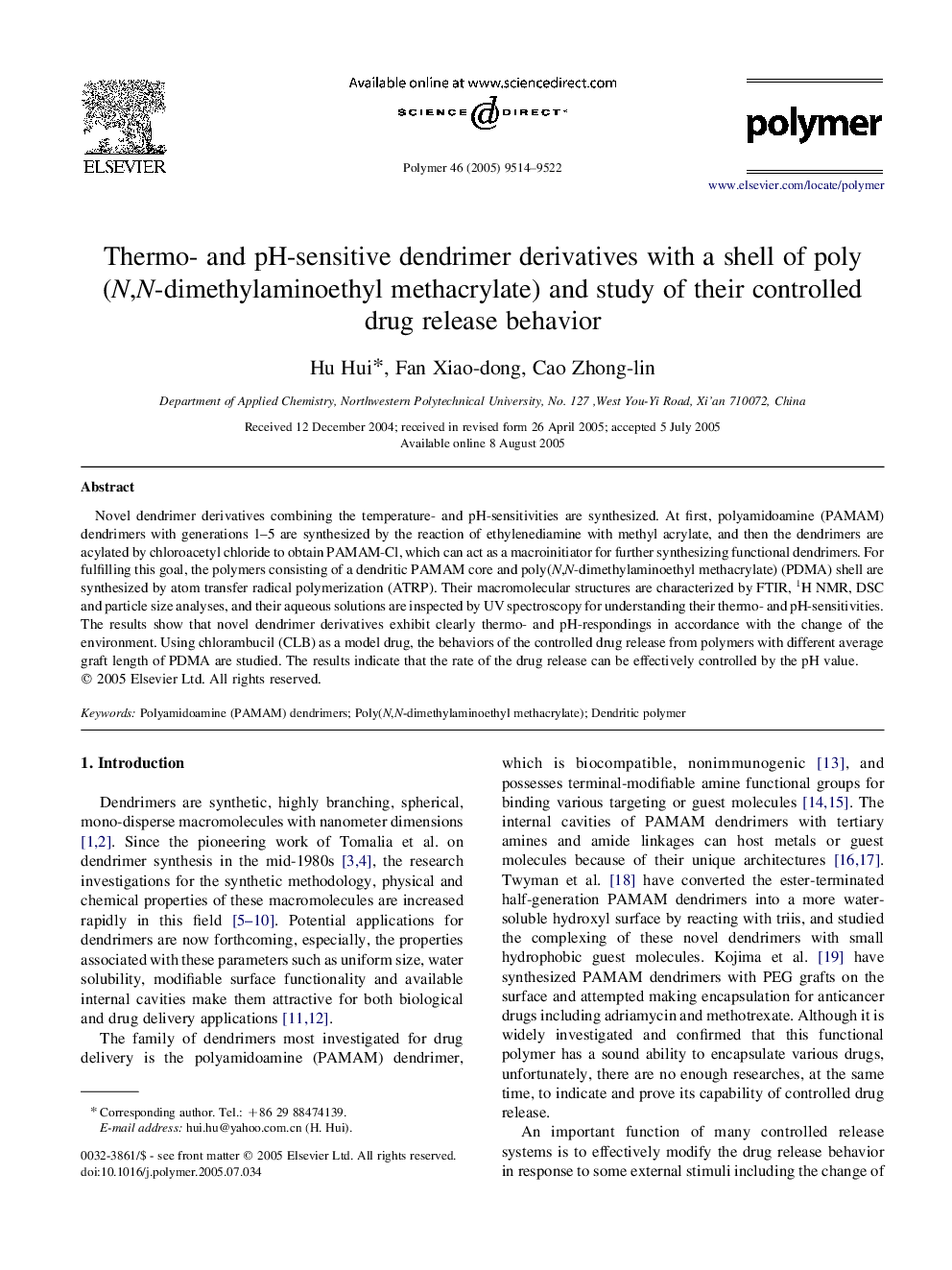| Article ID | Journal | Published Year | Pages | File Type |
|---|---|---|---|---|
| 5190455 | Polymer | 2005 | 9 Pages |
Abstract
Novel dendrimer derivatives combining the temperature- and pH-sensitivities are synthesized. At first, polyamidoamine (PAMAM) dendrimers with generations 1-5 are synthesized by the reaction of ethylenediamine with methyl acrylate, and then the dendrimers are acylated by chloroacetyl chloride to obtain PAMAM-Cl, which can act as a macroinitiator for further synthesizing functional dendrimers. For fulfilling this goal, the polymers consisting of a dendritic PAMAM core and poly(N,N-dimethylaminoethyl methacrylate) (PDMA) shell are synthesized by atom transfer radical polymerization (ATRP). Their macromolecular structures are characterized by FTIR, 1H NMR, DSC and particle size analyses, and their aqueous solutions are inspected by UV spectroscopy for understanding their thermo- and pH-sensitivities. The results show that novel dendrimer derivatives exhibit clearly thermo- and pH-respondings in accordance with the change of the environment. Using chlorambucil (CLB) as a model drug, the behaviors of the controlled drug release from polymers with different average graft length of PDMA are studied. The results indicate that the rate of the drug release can be effectively controlled by the pH value.
Keywords
Related Topics
Physical Sciences and Engineering
Chemistry
Organic Chemistry
Authors
Hu Hui, Fan Xiao-dong, Cao Zhong-lin,
